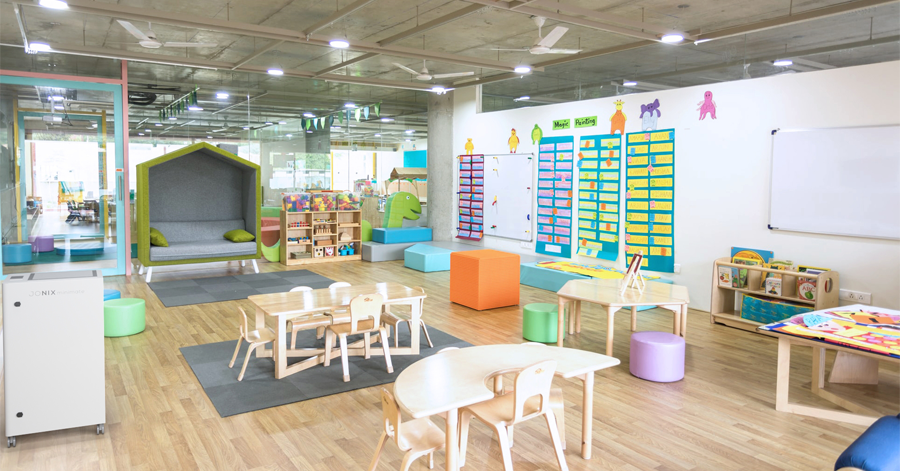Every hour, 450 litres of air enter our bodies.
Children and teenagers breathe 12 to 20 times per minute and inhale more air in proportion to their body weight than an adult. Improving air quality is, therefore, the first form of prevention. Where the air is cleaner and constantly purified, there will be fewer infections from airborne diseases, less chance of developing asthma and allergies, less respiratory system problems.
What you will find in this article:
Why guarantee cleaner air?
Breathing healthy air is first and foremost every child’s right.
Regardless of where you live, it is the duty of adults to guarantee the youngest healthy environments, where breathing is nourishment. In reality you pay close attention to what you eat, checking its ingredients and origin, but you don’t care about the air in the same way.
This neglect, however, is a major oversight. The quality of the air, in fact, affects the quality of life: the better the air, the better your health, well-being, productivity and mood will be.
Breathing healthy air means better oxygenating the body and brain, having a better immune response, being more focused and even learning better.
Clean air and healthy environments create safe places for those with fragile or developing immune systems.
What do you breathe in school?
In recent years, several European projects have been activated to monitor air quality in Italian and foreign classrooms.
The European Federation of Allergy (EFA) has shown, through surveys and experiments on school premises in various European countries, that the most common pollutants are present in high quantities within these spaces. The “Health Effects of School Environment” (HESE) project monitored a sample of 16 schools in various Italian regions, highlighting poor air quality.
The “School Environment and Respiratory Health in Children” (SEARCH) project, with poor environmental and respiratory health information in about 1000 school children in Lombardy, Piedmont, Lazio, Sardinia and Sicily, confirmed poor air quality inside each classroom.
Not only due to pathogens such as viruses and bacteria that can carry diseases and infections but also to the presence of volatile pollutants constantly emitted by building materials, paints, furnishings, cleaning products. Some of these factors result from ageing infrastructure and inadequate maintenance; others can also be found in new or newly renovated buildings.
How to ensure healthy air and safe environments even at school?
Good ventilation is certainly important, as indicated by the guidelines of the Ministry of Health regarding the prevention of Covid-19.
Opening your windows at regular intervals, even for a few minutes, helps to lower the level of pollutants generated by materials and by the presence of people.
You can do more: you can “clean” the air. If, by opening the windows, you can dilute the pollutants, through the reaction activated by the Jonix Non-Thermal Plasma technology you can neutralize the pollutants present in the environment. So: with air exchange, you reduce pollutants, with Jonix NTP technology you inactivate them.
And not only do you take away what is harmful but you also do something more: you nourish the air with a greater amount of oxygen. Breathing purified air through Jonix Non-Thermal Plasma Technology, creates optimal conditions for the children’s bodies in school environments, helping to improve the general state of well-being: it prevents contagions from airborne diseases, gives relief to the breathing difficulties of those suffering from asthma and allergies and improves concentration.
If you breathe well, you learn more and better!

